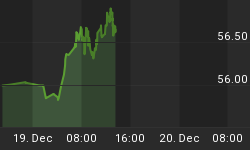"Gold's investment performance has dominated this decade. How come so few people have noticed...?"
NO FOOLING! It doesn't matter which currency you earn, spend or invest, gold bullion has been the best-performing asset class bar none this decade.
That fact bears repeating, so you'll have to forgive me:
Gold has dominated the last nine years for investors, smacking everything else in the nose and pulling their ears, too.
So when finance advisors and hacks finally come to glance back at this decade, they'll see it - in fact - as the "decade of gold". Just as US tech stocks ruled the 1990s, rising 11-fold on the Nasdaq. Just as Japanese exporters owned the 1980s, up more than six times over on the Nikkei-225. Just as gold itself dominated the 1970s.

Of course, this is hardly a unique insight amongst contrarian (i.e. bloody-minded and history-guided) investors.
Hell's teeth, at least one tech-stock heretic - Bill Bonner of The Daily Reckoning - called gold the "Trade of the Decade" just as the decade began.
But even though Bill's call has come good (and come good better even than his blushes would hint), the mainstream investment industry still refuses to notice the cold, hard fact of gold's decade-beating performance.
Take the out-performance of gold for US investors, for instance. Go on - take it! Because nobody in the financial media wants to acknowledge it.
Yet this decade, only residential real estate managed to beat gold consistently (excluding costs as well as rentals), right up until granite-n-plasterboard began to flatten and crater in spring 2006.
Housing has since fallen so hard, it barely matches the risk-free return offered by cash since the start of the decade. Yet that risk-free return in itself stands one-third below the previous five-decade average, with the 10-year Treasury yield paying just 4.6% per annum before tax and inflation.
And as for equities, re-investing every red cent of your dividends for the last 111 months would have added only 15% to the capital value of holding the S&P index today. Sadly for buyers of the Big Double Top in US equities, however, 15% hardly makes up for the index halving in price so far this decade.
Whereas Gold Bullion...? We need to be clear: Its historic reign throughout the Noughties is much more than a matter of "Dollar Decline". The deathless, unyielding metal has beaten all other assets for investors worldwide, whether in Euros, Yen, Swiss Francs, Chinese Yuan, Indian Rupees and the erstwhile "Two-Dollar" Pound.

So, Buying Gold nine years ago now looks a very smart move. (Almost as smart as slashing interest rates to all-time historic lows, while in fact stuffing your own retirement fund with inflation-linked bonds - a trick pulled off by the Bank of England's Pension Fund, as it happens...)
But what happens next? With the decade's last summer now peeping across the horizon, is that it for Gold Investment?
Could be. After peaking just shy of 40,000 points in late 1989, the Tokyo Nikkei sank by more than four-fifths over the next 14 years, retreating towards those 2004 lows just last month. Following its spring 2000 top, the tech-heavy Nasdaq sank by three-quarters inside 31 months, reclaiming only half its peak at the bounce and standing two-thirds down in April '09.
As for gold, a little over 29 years ago it began a two-decade descent...dropping more than 70% from its infamous peak above $800 an ounce - a level breached for just two, short winter days in January 1980.
Over the previous ten years - the last decade of gold - its price had shot 17 times higher versus the Dollar. Gold ended the bell-bottomed Seventies some 13 times more valuable in terms of business assets, as well, shooting higher as the US stock market was crushed by record-high interest rates sparked by yet higher inflation.
If this is the top - or damn near it - therefore, the current decade of gold looks a poor (if not late) performer.
During the 2000s, gold has risen 5-fold in terms of equities, and gained some 250% in nominal dollars. So far, gold remains well shy of previous decade-destroying returns.
More to come in Part II...















